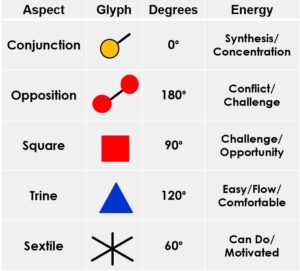
The interpretation of any horoscope is based on the inter-relationship between planets, signs, and houses. The ten planets represented in the horoscope modify each other through a system of aspects, each having its distinct characteristics. An aspect is defined as the mathematical relationship (or angle) between 2, or more, planets or angles (ASC, DSC, MC, or IC) in a chart. While there are many aspects used by astrologers, the best place to begin is with the five traditional major aspects, sometimes referred to as Ptolemaic Aspects since they were used by Ptolemy who defined them in the 1st Century AD. These aspects are the Conjunction, Sextile, Square, Trine, and Opposition. The major aspects are those that can be used to divide 360 evenly and are each divisible by 10.
Each of these aspects represents a different type of energy, and some are more challenging than others. It is important to remember, however, that no aspect is ‘good’ or ‘bad’ and too many or too few of one type can be a disadvantage. Aspects may be helpful or detrimental, depending on the planets involved…they describe the potential interaction, tendencies, abilities, and disabilities apparent with the inter-relationships that exist. In this article, the conjunction, opposition, and square are highlighted.
Conjunction
KEYWORDS: emphasis, focus, synthesis, concentration
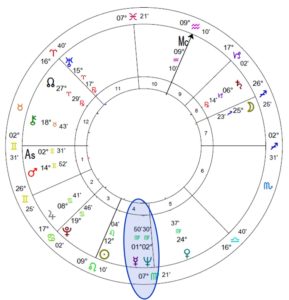 The Conjunction is generally considered the most powerful aspect since it mutually intensifies the effects of the planets involved. There is strong potential for a dynamic expression of the combined energies of the planets in this relationship. When two or more planets are in Conjunction they must always be considered together; it is not possible to view them independently since they will continually have an effect on each other. This aspect is often harmonious, though whether it is ultimately positive (helpful) or negative (detrimental) depends on which planets are involved. Planets in conjunction are most often in the same sign.
The Conjunction is generally considered the most powerful aspect since it mutually intensifies the effects of the planets involved. There is strong potential for a dynamic expression of the combined energies of the planets in this relationship. When two or more planets are in Conjunction they must always be considered together; it is not possible to view them independently since they will continually have an effect on each other. This aspect is often harmonious, though whether it is ultimately positive (helpful) or negative (detrimental) depends on which planets are involved. Planets in conjunction are most often in the same sign.
An example of a conjunction is shown here with Mercury and Neptune, side by side, in Virgo in the 4th House.
Hard Aspects
The opposition and square are often referred to as hard or difficult aspects; however, without them nothing much can happen. They are challenging, dynamic and energizing, and each one requires some time of action or resolution. While they often indicate struggles, they offer the potential for personal growth and accomplishment.
Opposition
KEYWORDS: push and pull, awareness, balance, cooperation, conflict, divided
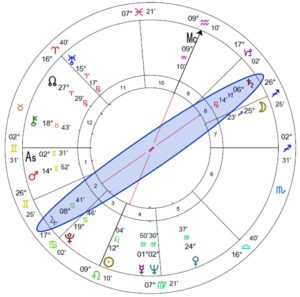 Oppositions are considered to be the second most powerful aspect. The main difference between the Conjunction and the Opposition is that that energy of the Conjunction tends to be unifying, while the Opposition tends to exaggerate the challenge between the planets. There is often a kind of “push and pull” or “back and forth” feeling to these opposing energies. This aspect is regarded as dynamic, meaning the energy is active and requires resolution in some way. If managed effectively, change can be realized often yielding positive results. Once again, the overall quality of the aspect is largely dependent upon the planets involved and how the individual uses the relative energy. Planets in opposition are 180°, or 6 zodiac signs, apart.
Oppositions are considered to be the second most powerful aspect. The main difference between the Conjunction and the Opposition is that that energy of the Conjunction tends to be unifying, while the Opposition tends to exaggerate the challenge between the planets. There is often a kind of “push and pull” or “back and forth” feeling to these opposing energies. This aspect is regarded as dynamic, meaning the energy is active and requires resolution in some way. If managed effectively, change can be realized often yielding positive results. Once again, the overall quality of the aspect is largely dependent upon the planets involved and how the individual uses the relative energy. Planets in opposition are 180°, or 6 zodiac signs, apart.
An example of an opposition is shown here with Jupiter in Cancer in the 2nd House opposite Saturn in Capricorn in the 8th House.
Square
KEYWORDS: challenge, action, tension, frustration, confrontation, resistance
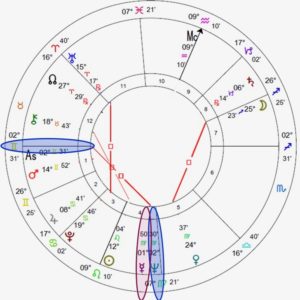 The energy of a Square is usually described as stressful or challenging. Two competing energies are trying to move in different directions. While Squares are often thought of as difficult or undesirable, the benefit is that they inspire or require action. There is pressure for the individual to work through issues characteristic of the planets involved and these cannot be ignored. Consider that every progress requires some degree of friction or tension to move forward. The frustration or challenge presented by a Square provides an opportunity to create something or make it happen. Squares can require a good deal of effort but the potential outcome, if achieved, will be well earned. The planets in square aspect are 90°, or 3 zodiac signs apart.
The energy of a Square is usually described as stressful or challenging. Two competing energies are trying to move in different directions. While Squares are often thought of as difficult or undesirable, the benefit is that they inspire or require action. There is pressure for the individual to work through issues characteristic of the planets involved and these cannot be ignored. Consider that every progress requires some degree of friction or tension to move forward. The frustration or challenge presented by a Square provides an opportunity to create something or make it happen. Squares can require a good deal of effort but the potential outcome, if achieved, will be well earned. The planets in square aspect are 90°, or 3 zodiac signs apart.
A square aspect relationship is shown here with both Mercury and Neptune in Virgo in the 4th House square the Ascendant in Gemini.
As previously noted, aspects may be helpful or detrimental, and the opposition and square are examples of often challenging aspects but, without them, no progress can take place. There must be some degree of friction to facilitate movement in a particular direction. Conversely, if things are in harmony or balance, nothing much happens, and circumstances remain ‘status quo.’ The next article will cover the softer aspects, trines, and sextiles. In the meanwhile, you may wish to review your chart and consider which planets are in conjunction, opposition or square. How have these planetary relationships manifested in your life?
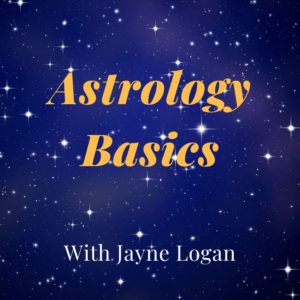
Learn more about astrology with our online Astrology Basics Course.
Join author, life coach, and astrologer, Jayne Logan in an exploration into the basic and foundational principles of astrology.
Astrology Basics is a 6 session series introduction to the complex world of astrology. It is suitable for beginners, new students, or anyone with a general interest in the topic. The program will take you through the basics while offering an entre into the unique language of this ancient art, in an easy-to-understand and visual format. A different topic is presented in each lesson, each one building on the previous lesson. At the end of the series you will have a foundational understanding of the components of a horoscope and some basic tools to synthesize the information.
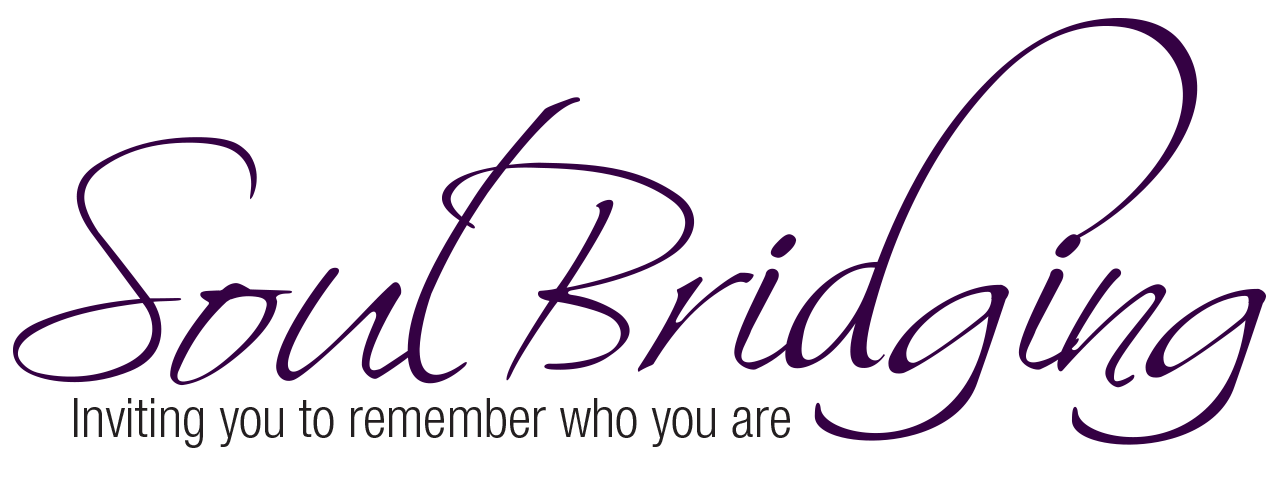


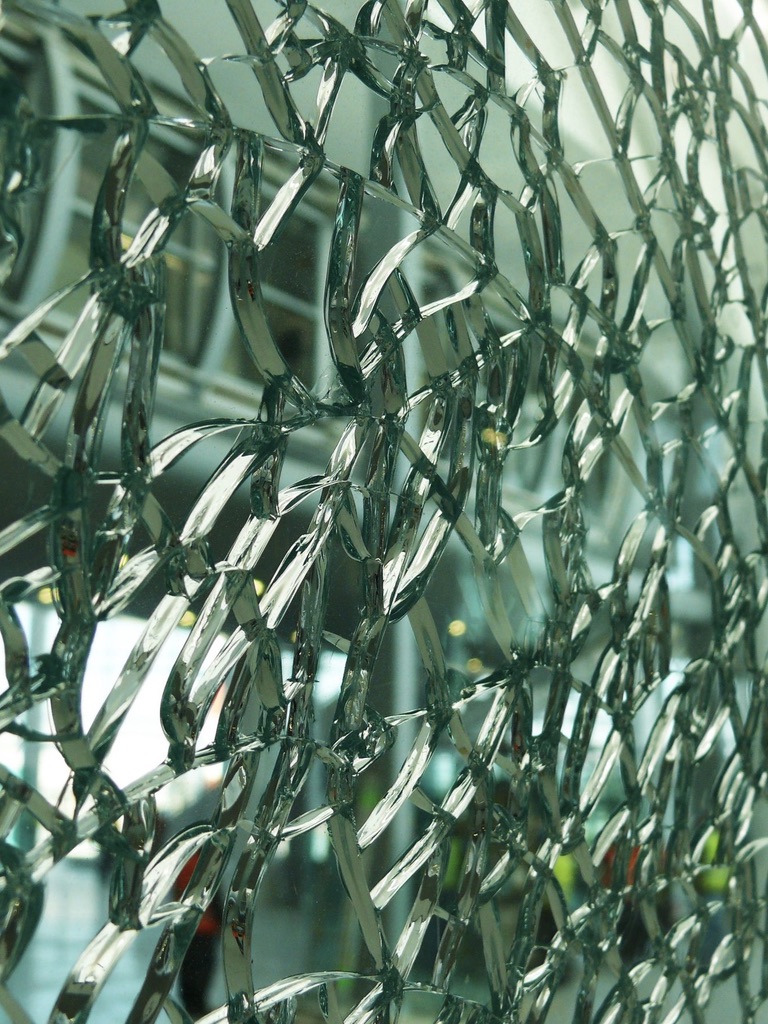
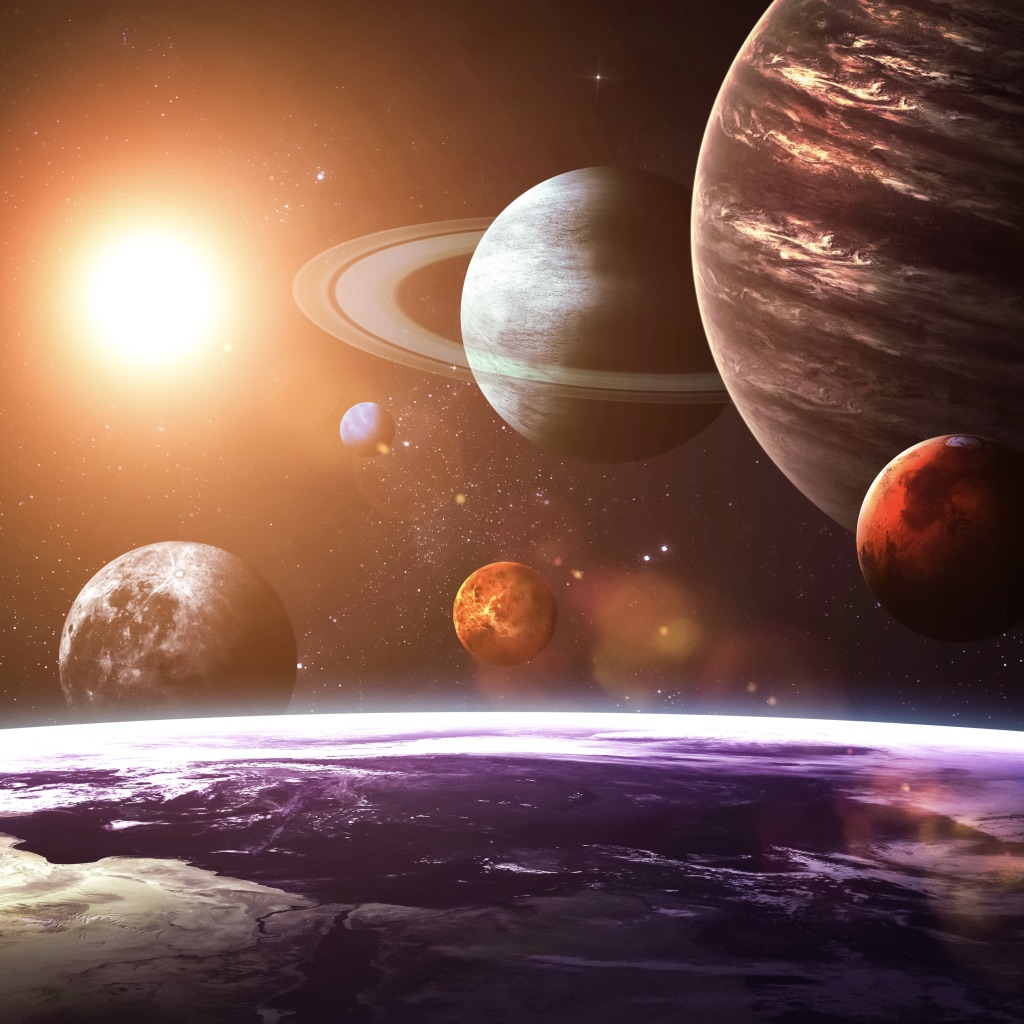


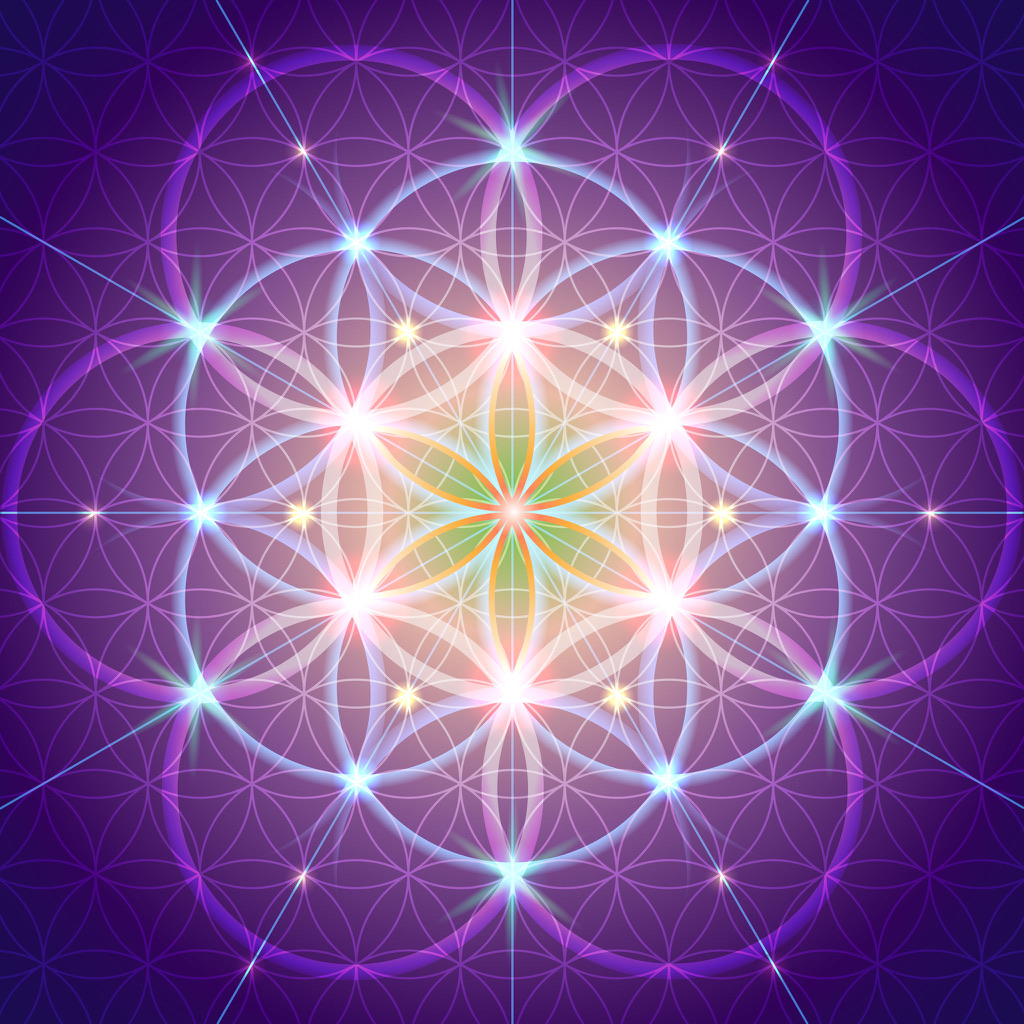
Join the Conversation